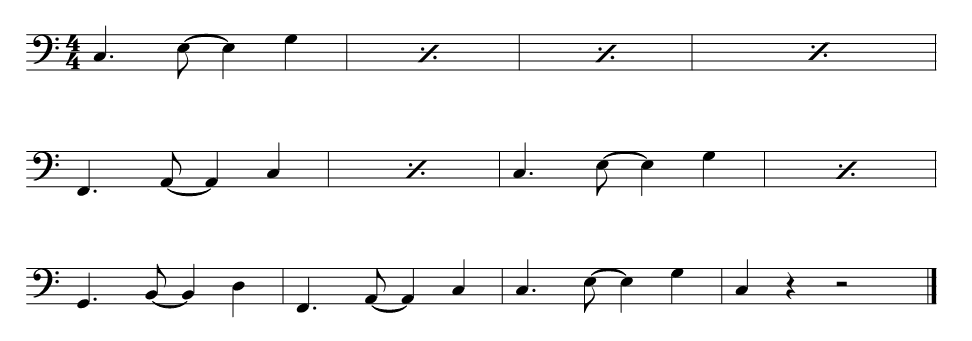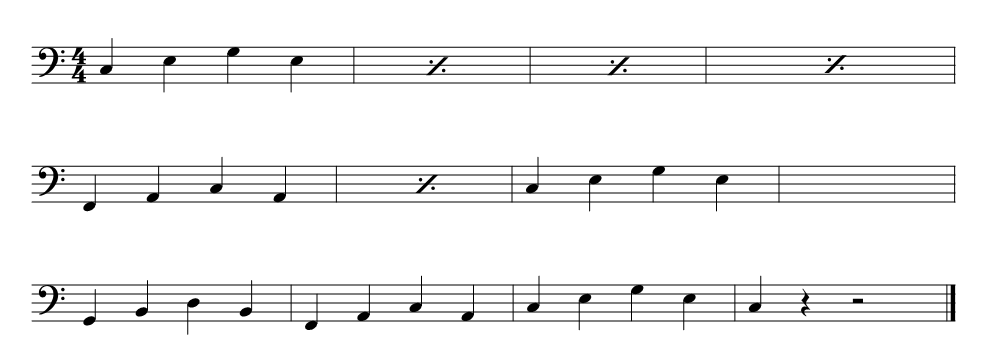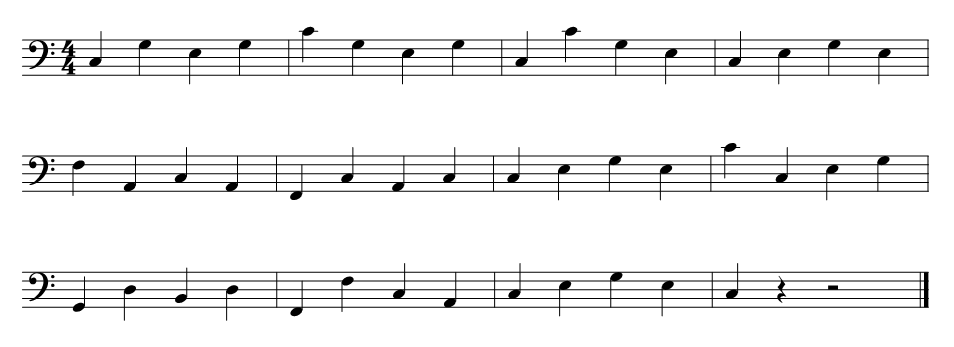by Brendan Clarke, Bass Lecturer at JMI
Good things tend to come in three’s and this is no different in the world of music and jazz harmony. In this blog I’d like to talk about the importance and infinite possibilities presented by the humble triad in particular for bassists
For any students wanting to learn double bass or bass guitar in Brisbane with me at JMI, one of the first tasks that will be assigned will be to learn, from memory, major triads around the cycle of fourths. For many musicians a triad is the first chord or arpeggio that we learn; simply take the 1st, 3rd and 5th note of a major scale and presto you have yourself a chord and you have just entered a whole new world of musical and creative possibilities!
I’d been shown how to play a few chord shapes on the guitar as a kid but as a lot of us know, you tend to just learn the particular hand shape but nothing about the notes that make up the actual chord. When my first bass guitar teacher Tony Hayes explained to me how a chord and arpeggio is created it was a revelation. As well as showing me about triads, Tony also showed me how to play major triads in all 12 keys around the cycle of 4ths.
This concept of practicing triads around the cycle has formed the foundation of my musical life for almost 30 years, from the creation of simple bass lines to the most complex improvisational concepts; I always seem to find myself returning back to the triad.
As I mentioned before one of the first exercises that my new students will do in their bass lessons in Brisbane will be to learn major triads around the cycle in all 12 keys:

This simple exercise is of vital importance and will hopefully become their musical bedrock like it has for me. Practicing around the cycle of 4ths is important for a number of reasons. Firstly it’s a logical and practical way of learning to play something in all 12 keys; whether it be a triad or a great melodic line or “lick” that you want to incorporate into your own playing. As jazz musicians we like to “take it round the cycle” to really internalise a musical idea properly. Secondly a lot of the harmony that we deal with as jazz, rock and contemporary players moves in 4ths.
For example think of a standard 12 bar blues – we play the I chord for four bars and then change to the IV chord in bar five. Anyone who has any experience in jazz harmony or who has perhaps taken jazz classes will be familiar with the II – V – I chord progression; these three chords move in intervals of 4ths as well. For a bassist there is also the fact that the instrument is tunes in 4ths making it even more logical to practice around the cycle of 4ths
So now that we have learnt the major triads around the cycle what do we do next? We apply it to a musical situation straight away and I also like to show examples of where the triad is used in a well-known bass line. One that I like to use as an example is the famous Elvis Presley song “Hound Dog”. It’s a 12 bar blues in C and the use of the triad is in full view and plain to see in all its glory!

A simple but effective and groovy use of a major triad. The next step I take in my bass lessons in Brisbane is to use triads to construct a walking bass line, which is bread and butter for any jazz bassist. The most simple use of a triad in a walking bass line in 4/4 time is to play 1 3 5 3 of the chords. Here is a 12 bar blues in C to demonstrate:

Once again simple but effective and functional walking bass line, just make those ¼ notes groove and everyone will love you! The next step would be to start mixing it up a bit, use all the same notes but play them in a different order (keep the root on beat one for now!). Here’s an example of mixing the notes up a bit to make your line a bit more interesting:

You can probably already see that the possibilities are endless already just with these three notes of each chord. The next phase is to learn all the minor triads around the cycle of 4ths. To do this we simply flatten the 3rd (or 2nd note) of each triad. Here are all the minor triads in all 12 keys:

Once this has been memorised we apply the same concepts to minor chords as we did to the major triads. Now with both minor and major triads we have all we need to negotiate your way through a large percentage of jazz harmony and we haven’t even added any 7ths yet
Don’t forget that these ideas can be applied to soloing as well and remember this is just the very beginning of a much larger world. If you’re intending on getting bass lessons in Brisbane or jazz classes in Brisbane at JMI with me, this is what we will be learning first and I can’t stress enough the importance of knowing the basics really well. It’s from theses simple ideas that you can build a solid musical foundation that will hopefully become an infinite source of inspiration and knowledge that you can draw from for the rest of you life.
